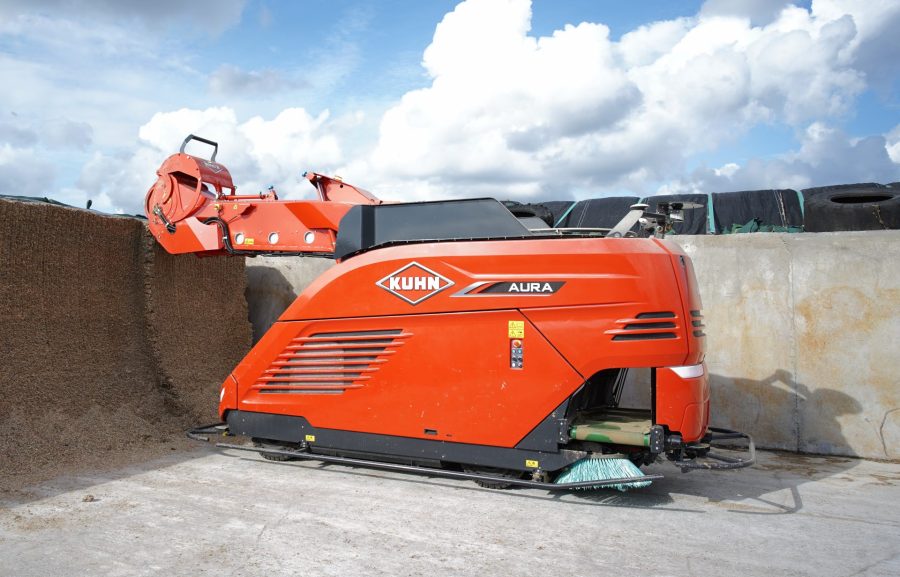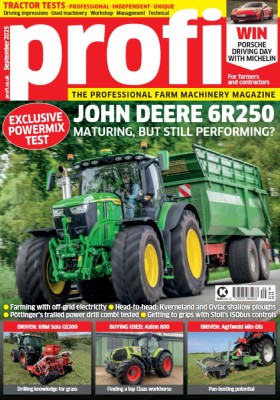The self-propelled Aura diet feeder broke cover as a prototype autumn 2020. Now ready for a market launch, the first batch of machines will be limited to France next year. Other European countries will follow although it is not expected in the UK until 2024/2025.
Capable of feeding up to 280 cows, we covered some of the technical details of the Aura in an earlier story (see link). The new bit is that Kuhn has just released the first pictures and results with the pre-production machine, which has worked for a year at a French farm with 300 dairy cows.
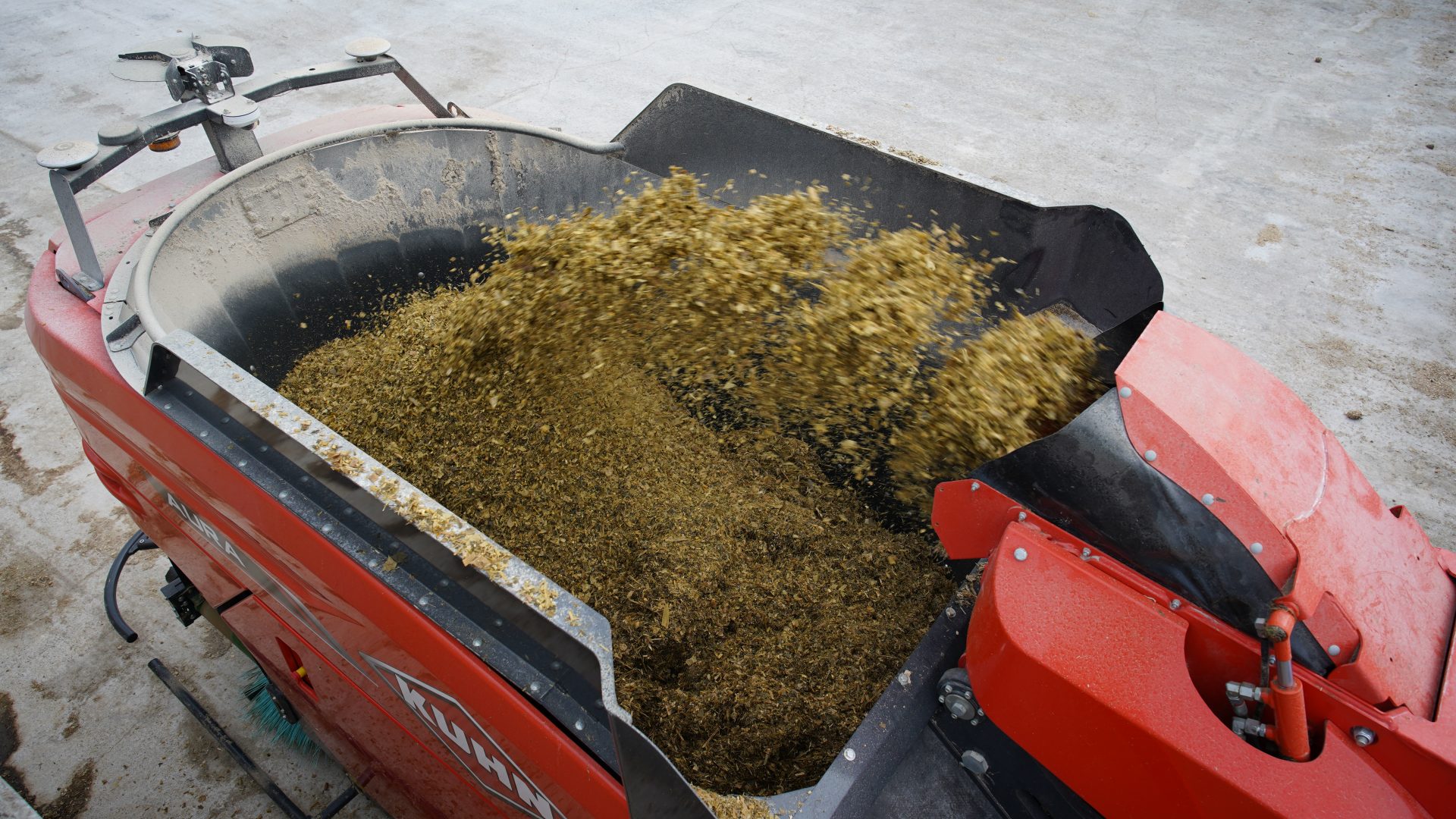
Powered by a 56hp diesel engine (electrically powered version in the pipeline), silage is loaded by the multi-purpose milling head. The 3.0m3 mixing tub contains two vertical augers.
Operating 10 hours a day, during the 12 months it clocked up 3,688 hours. Spilt between 45% silage cutting and loading, 11% distribution and 44% travel time, all told it fed 32,160t. Average cycle time was 46 minutes and fuel consumption 3.7l/hr.
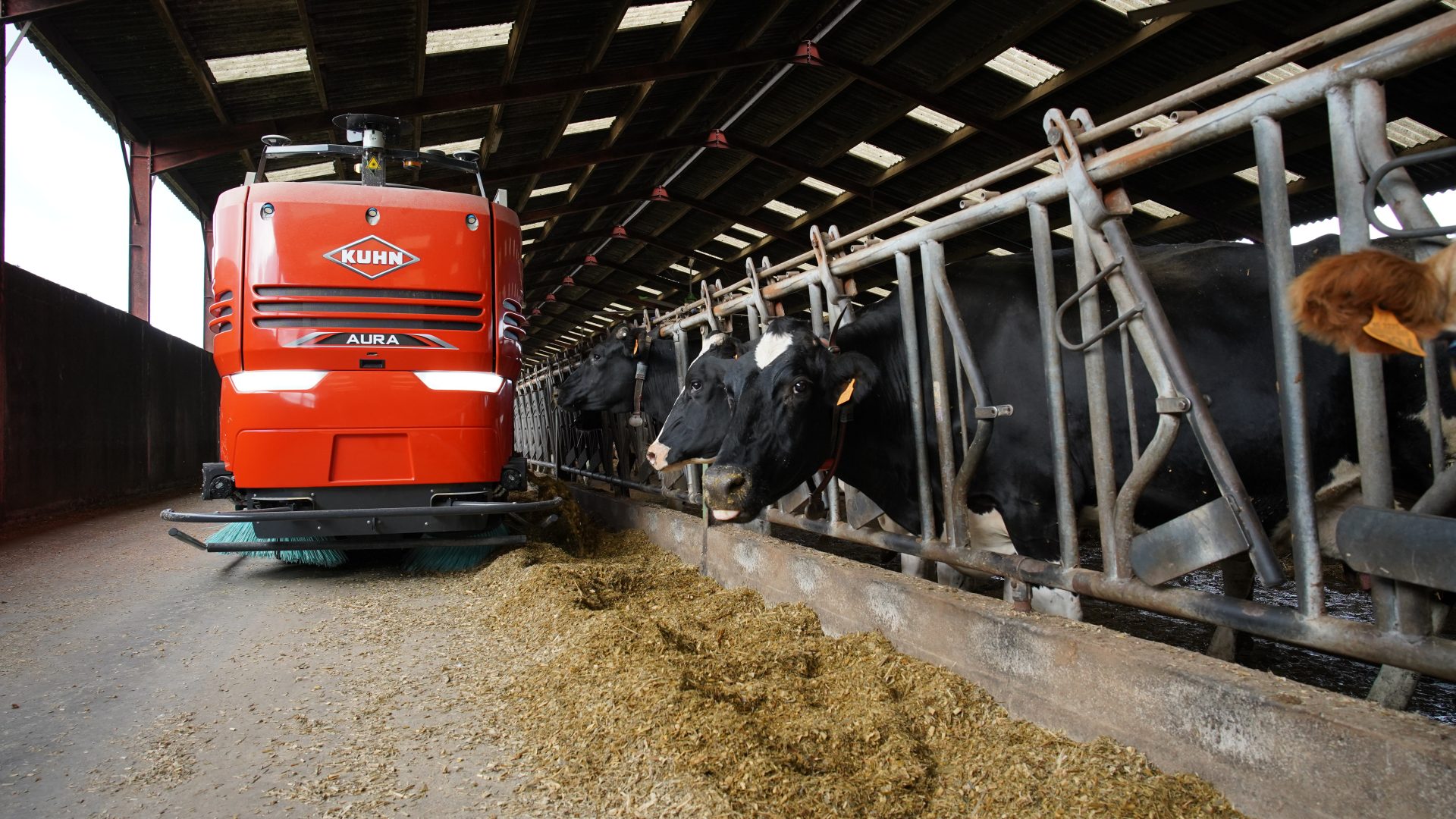
Feed is pushed up by rotating brushes. Working on both sides, these same brushes can be used to clean the base of the clamp.
The farm reckons that the precise feeding of the ration and reduction of leftovers saved 8.0ha of maize silage, and the Aura used 4,380 litres less diesel compared to the farm’s previous trailed mixer wagon
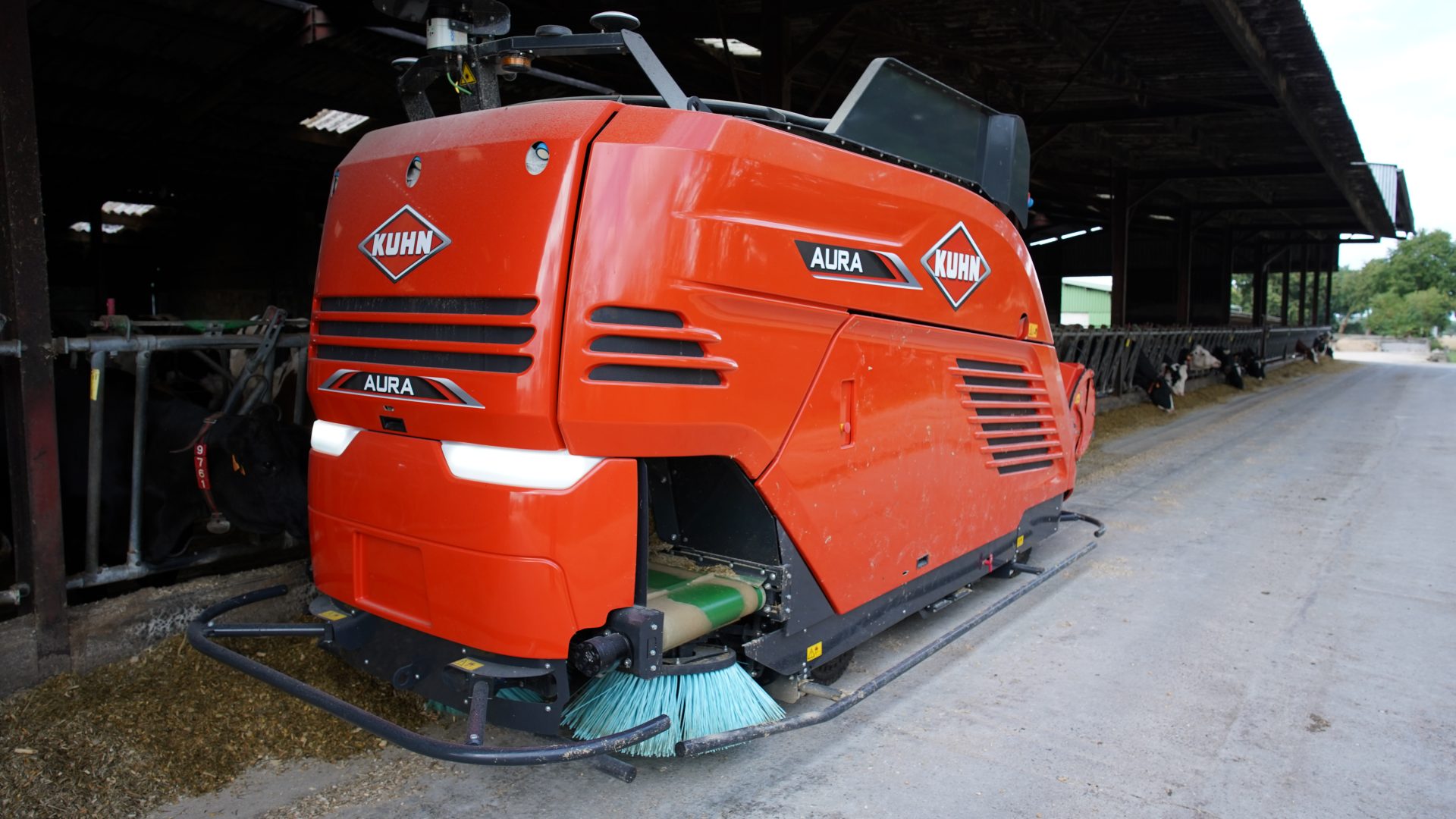
The Aura is 2.6m high, 1.9m wide and has a length of just under 7.0m. It feeds out at a speed of 2.0km/hr on both the left and right using a conveyor, and can travel at up to 7.0km/hr.
There was also a time saving. Previously, it took the farm 1.5 hours to feed all the animals. The manual input has been cut to 30 minutes with the Aura (preparing the clamp edges and filling the concentrate hoppers).
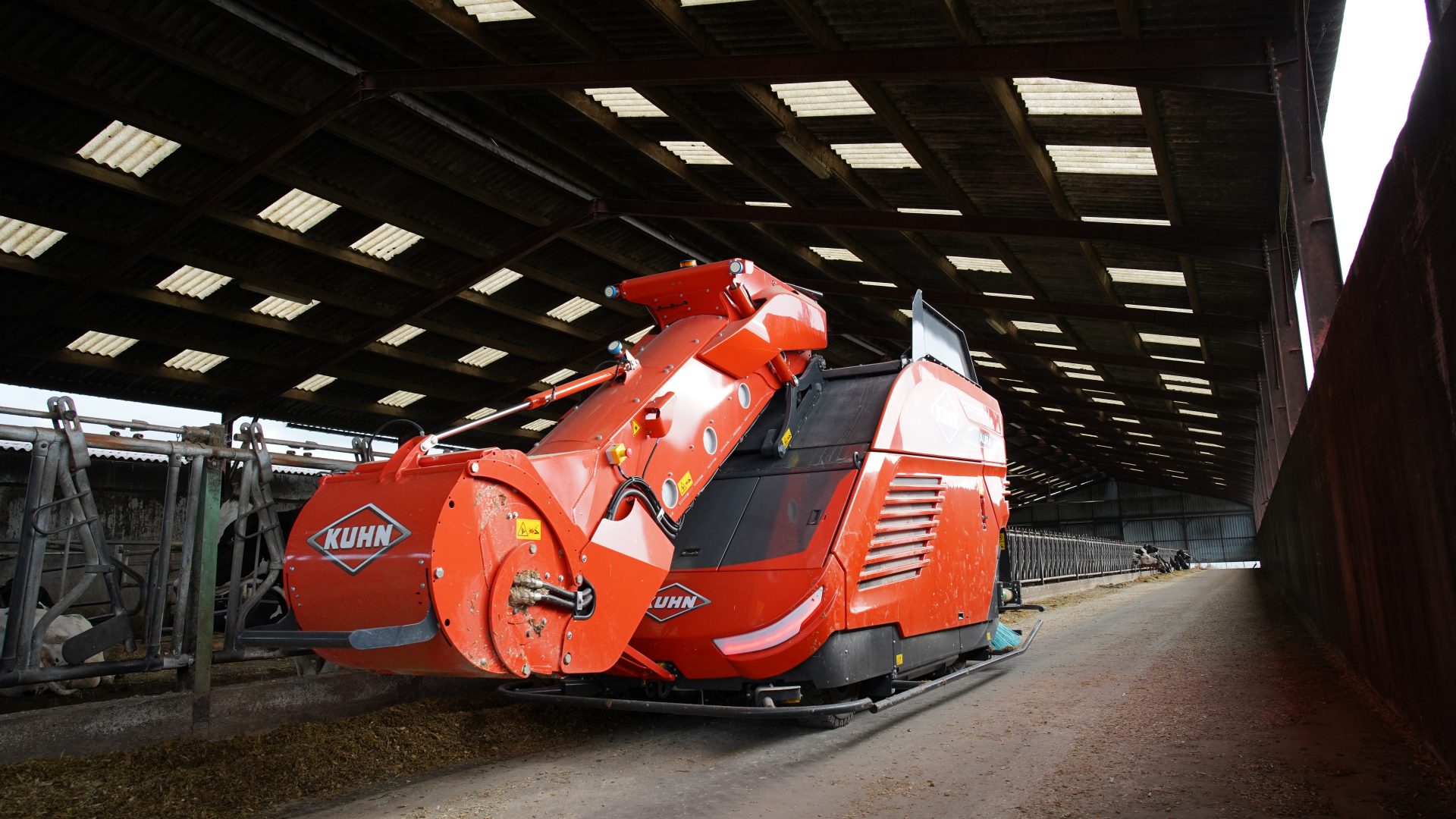
A dual guidance system uses GPS and RTK outside and LIDAR inside in conjunction with an onboard odometer. Objects are detected by inbuilt sensors and the Aura can travel on gradients up to 20%.
Other benefits for the French farm include needing less labour at the weekend, and providing a fresh ration six times a day resulted in no decrease in milk production during hot weather and the farm has seen an 80% reduction in veterinary costs.

